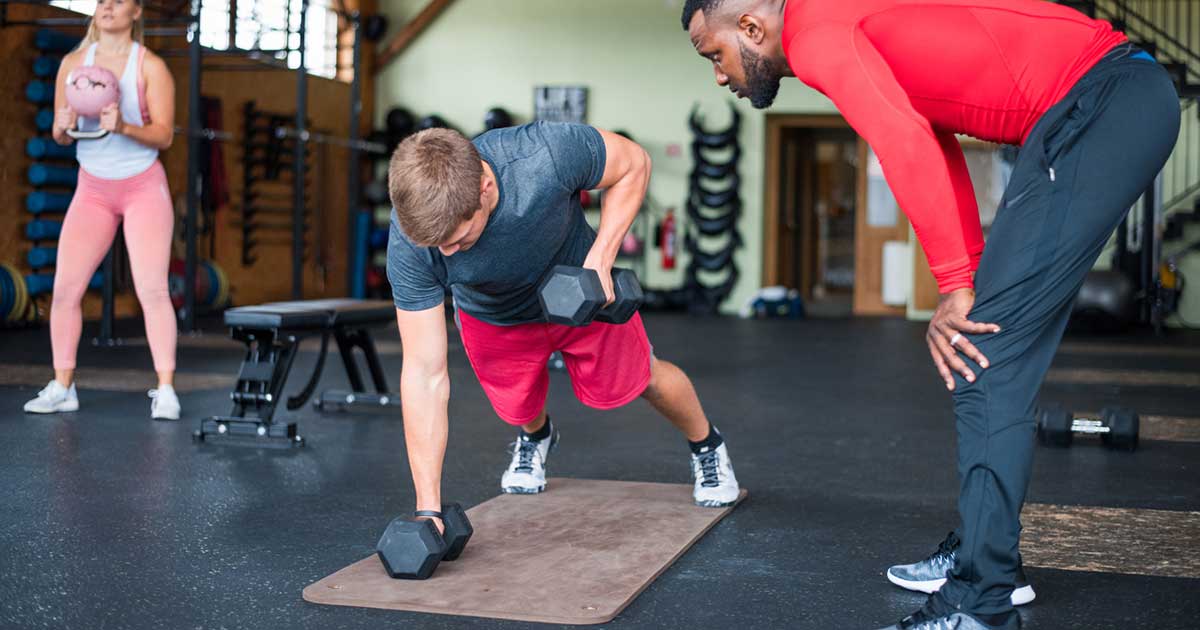
Advice to improve your movement, fitness, and overall health from the #1 in orthopedics in the U.S.
Why Sports Physicals Are Important for Young Athletes
Learn more about the potential issues that sports physicals can detect and how they can help lower the risk of serious complications.
Advice to improve your movement, fitness, and overall health from the #1 in orthopedics in the U.S.

“We want people to take part in sports,” Dr. Milligan says. “The importance of sports and exercise for physical and emotional health is well-proven. But we want young athletes and athletic programs to be as safe as possible.”
What Sports Physicals Look for in Young Athletes
The typical sports physical is designed to look for a variety of health problems that might affect young athletes. The most significant of these involve cardiovascular issues, such as cardiac arrest. Screening for heart conditions involves taking a detailed history of chest pain, excessive shortness of breath, irregular heartbeats and other possible symptoms of cardiopulmonary distress. Any family history of cardiovascular problems is also important to note, including heart attacks, strokes and hypertrophic cardiomyopathy, an uncommon genetic disorder in which the muscles of the heart become thick, and it loses the ability to function correctly.
In addition, Dr. Milligan and the HSS Florida team have begun implementing electrocardiogram screening. The electrocardiogram, or EKG, is an additional step that can detect abnormalities in the electricity of the heart that may indicate a disorder of the heart muscle tissue or electrical patterns. HSS Florida is collaborating with the nonprofit group Who We Play For in an effort to provide free EKG screenings as part of the sports physical.
Medical staff also look for conditions like asthma that can impair breathing during exercise, as well as bone and joint problems, including past fractures and sprains that have yet to fully heal. They also consider how an athlete has recovered from a prior surgery and any limitations their recovery might place on participation in certain sports.
Testing for Sickle Cell Trait
Relatively speaking, death in young athletes is rare, Dr. Milligan says. The four most common causes are sudden cardiac death, heat stroke, head and neck injuries and sickle cell trait.
A rare genetic disorder, sickle cell trait can cause red blood cells—responsible for ferrying oxygen around the body—to become misshapen. Although sickle cell disease, the more severe form of the condition, is often debilitating or fatal, sickle cell trait generally is not life-threatening. However, athletes with sickle cell trait, which is detectable through a blood test, are at increased risk for collapse, damage to the heart and other organs and possibly death.
Despite this risk, having sickle cell trait does not mean sports are off limits. “You just need to have the right plan in place to try to prevent symptoms and the correct plan for when a player does experiences symptoms,” Dr. Milligan says.
No matter the cause, the best way to prevent issues in young athletes is educating both players and athletic staff about the signs of a medical crisis—shortness of breath, chest discomfort, abdominal pain. And for sickle cell in particular, knowing the difference between pain associated with the disorder and routine cramping is key: An athlete who’s cramping will have rigid muscles, while those in a person with sickle cell trait will be soft to the touch.
Ensuring Young Athletes’ Safety
Undergoing a sports physical every year may feel unnecessary for players who receive a clean bill of health, but some concerns can take several years to emerge. A player who is cleared as a freshman might develop issues requiring medical attention when they reach their junior year. “That’s why the physical is an annual event,” Dr. Milligan says. “Things can change and develop over a lifetime.”
The good news is that even young athletes at risk for potentially serious health problems can still participate in sports, with some modifications. A player found to have asthma, for example, might need to have an albuterol inhaler on hand and an action plan worked out with the coaching staff in case of a breathing emergency. “A lot of this is about being prepared,” Dr. Milligan says.
Although young athletes with significant cardiovascular issues may have to give up sports altogether, in most cases, the goal for clinicians is finding safe alternatives for players. Someone with problems in their spine and neck might not be able to play football, Dr. Milligan says, but they could be cleared to swim or run. Similarly, an athlete with breathing trouble might not be able to join the track team, but they could go out for golf.
Published 9/6/2023


